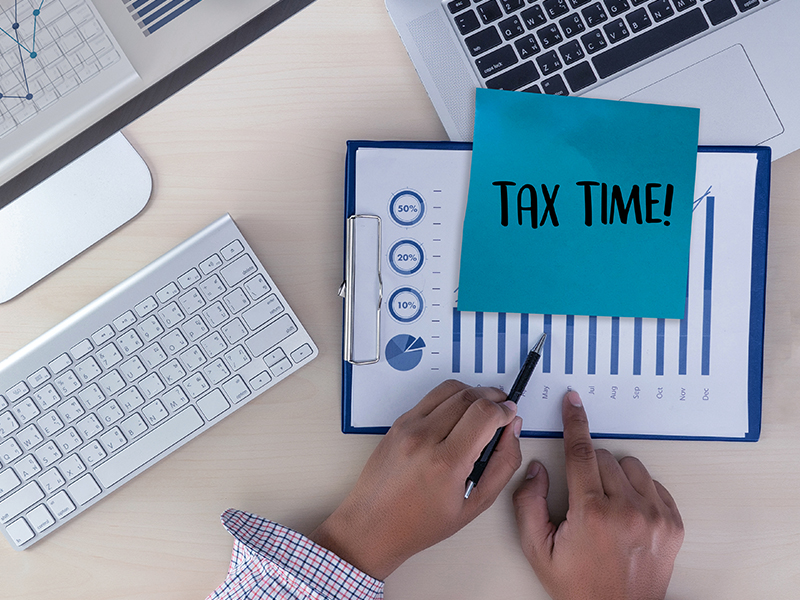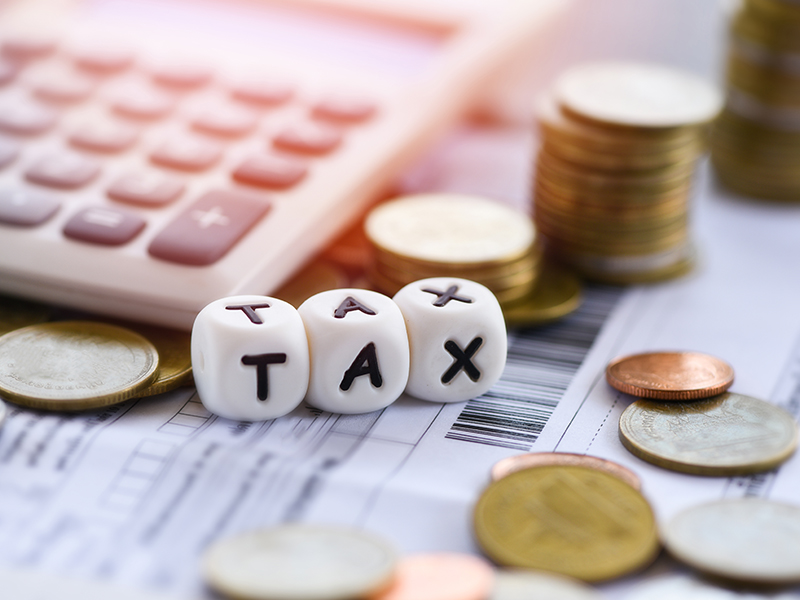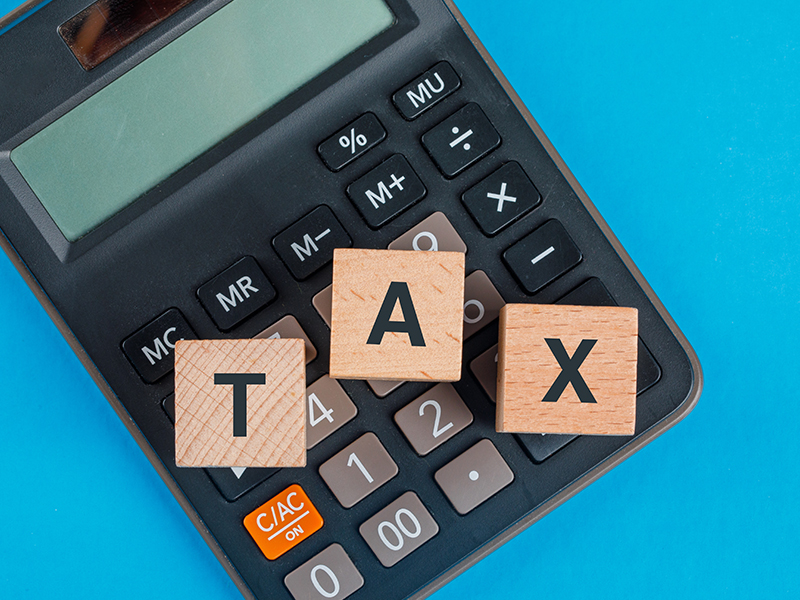Calculating your taxes and planning your investments should not be left as a last-minute task to be done at the end of the financial year in March. The Indian Income Tax Act provides many tax saving options that can help you to reduce your tax liability. One can make certain investments, savings, and expenditures as outlined in sections 80C, 80D, 80EE, and many more that provide guidelines for the same. A total of 1.5 lakh rupees can be claimed as an exemption through section 80C investments.
How To Calculate Tax

Before undertaking any investments and expenses, one must know their income, their tax rates, and then understand the possible investments to save tax. In India, we follow a tax slab structure on the basis of which the tax percentage is calculated for each individual.
| Taxable income | Income Tax Rates* |
| Up to ₹2.5 Lakh | Nil |
| ₹2.5 Lakh – ₹5 Lakh | 5% of total income exceeding ₹2.5 Lakh |
| ₹5 Lakh – ₹10 Lakh | 20% of total income over and above ₹5 Lakh + ₹12,500) |
| Above ₹10 Lakh | 30% of the total income over and above ₹10 Lakh + ₹1,12,500) |
*An additional health and education cess at 4% of the total tax payable is levied. A surcharge of 10% of the total income also has to be paid by people earning higher than ₹50 Lakh annually. Such cess rises to 15% when the income is higher than ₹1 Crore.
Based on the above table, you can identify the tax bracket you fall under and the overall tax liability before any exemptions.
How To Plan Investments That Will Help With Tax Savings

The best time to start tax planning is at the beginning of the financial year to help achieve your long term financial goals. Start by assessing all the tax-saving expenses already incurred for the current year like insurance premiums, home loan repayment, etc. Add them up and deduct the total from Rs 1.5 lakh as this is the maximum limit under Section 80C. This is the amount you should aim at investing in different investment vehicles like equity-linked saving scheme, PPF, NPS, etc. based on your risk appetite, time horizon, and goals. Once this is exhausted you can claim deductions on investments like property, etc. Be sure to read policy documents and invest in eligible tax-saving instruments accordingly.
10 Best Tax-Saving Schemes To Help You Avail Tax Benefits
There are many income tax saving options under various sections that will lower your tax burdens while at the same time help you in saving money for the future.
1. Tax Deductions Under Section 80C

The most popular tax-saving options available to individuals and HUFs in India are under Section 80C investment options where you can claim deductions up to the limit of Rs 1.5 lakh in a financial year.
| Investment | Returns | Lock-in Period |
| 5-Year Bank Fixed Deposit | 6% to 7% | 5 years |
| Public Provident Fund (PPF) | 7% to 8% | 15 years |
| National Savings Certificate | 7% to 8% | 5 years |
| National Pension System (NPS) | 12% to 14% | Till Retirement |
| Equity Linked Saving Scheme (ELSS) | 15% to 18% | 3 years |
| Unit Linked Insurance Plan (ULIP) | Varies with Plan Chosen | 5 years |
| Sukanya Samriddhi Yojana (SSY) | 7.60% | N/A |
| Senior Citizen Saving Scheme (SCSS) | 7.40% | 5 years |
The ELSS tax saving is a diversified mutual fund scheme, where 65% of the fund is allocated to equities. You can diversify your investments amongst different ELSS schemes to reduce risk as their returns are based on market performance. This investment vehicle offers flexibility and liquidity and is best suited for individuals with a high-risk appetite.
The above government schemes (PPF, NPS, SSY, SCSS) under section 80C offer high returns on total investments along with tax waivers. Individuals can claim up to ₹1.5 Lakh spent on such investments as tax waivers on total annual income. Most of these government schemes have tax exemptions even on the dividends and interest amounts received. The SCSS is specifically for senior citizens above the age of 60 years to promote financial safety amongst that group.
2. Savings With NPS Under Section 80CDD

There are tax saving options other than 80C by investing up to Rs 50,000 in NPS. This is excluding the contribution made in NPS through section 80C. This allows you to invest in NPS and claim up to a deduction of Rs 2 lakhs in total.
3. Pay Health Insurance Premiums With Section 80D

One of the tax-saving investment options encouraged by the government is buying health insurance and paying premiums on the same. Medical insurance premium to be claimed at Rs 50,000. The limit is Rs 25000 for self, spouse, and children and Rs 25,000 for dependent parents below 60 years. In case the policyholder and his parents are above sixty years of age, the maximum tax deduction is up to Rs 1,00,000.
4. Education Loan Repayment Under Section 80E

Students who have availed an education loan to pursue their education are provided tax saving schemes on the repayment of the interest component of the loan under Section 80E. This tax deduction can be claimed by either the student or the parents depending on who is repaying the loan. The deduction can be claimed from the year you begin paying interest and the succeeding 7 years or until the whole amount is paid.
5. Rent Payments Exemptions With Section 80GG

One of the tax saving options for salaried if you don’t receive house rent allowance (HRA) from your employer, you can claim a tax deduction for rent paid up to Rs 60,000 in a financial year. A taxpayer is eligible for this deduction provided he or his spouse does not own residential accommodation at the place of his employment and must be living on rent.
6. Home Loan Interest Under Section 24 And Section 80EE

Homeowners with a home loan can claim tax deduction under Section 24 on the interest component of their home loan as investments to save tax. Interest paid on a home loan can be claimed as a deduction of up to Rs 2 lakhs. Section 80EE also allows you to claim a deduction of up to Rs 50,000 on home loan interest which is over and above the limit of section 24. You are allowed additional interest of Rs 1.5 lakh on the purchase of a new house under the affordable housing scheme as per section 80EEA is extended till 31st March 2022.
7. Charity Deductions Under Section 80G

Any cheque deductions made to charity can qualify as income tax saving options. This includes contributions to the National Relief Funds too. The government specifies organizations that are allowed under this rule and one can claim either 50% or 100% of the donation amount made.
8. Medical Expenses For Disability Under Section 80DD And 80U

If you have a dependent family member who has a permanent disability, you can claim a tax exemption on all medical expenses borne under Section 80DD. Up to Rs 75,000 can be claimed to finance the expenses of individuals having 40% or higher disability, while the exempted amount goes up to Rs 1,25,000 for people who suffer from 80% or higher disability. Similarly, the disabled person can claim the same amount under section 80U as tax saving options.
9. Savings Account Under Section 80TTA

You can claim a deduction of a maximum of Rs 10,000 as tax saving investment options against gross total interest earned from the savings accounts with banks and/or post office. It does not consider the interest income from FDs, RDs or corporate bonds though.
10. Capital Gains Under Section 54

To protect the income generated through a sale of capital assets and lower the overall tax liability associated with the same; several exemptions under capital gains have been introduced. When a taxpayer sells her residential property and acquires a new one within one year of the sale, they will be exempted from paying taxes on long term capital gains.
Key Takeaways
- 80C investment options also include children’s tuition/education fees up to a maximum limit of Rs 1.5 lakhs.
- Money received from relatives as gifts or through wills is completely tax-free. From non-relatives, however, gifts up to Rs 50,000 are tax-free
- If you can take a long-term time view for more than 10 -15 years, then ELSS tax saving funds are perhaps the best option to save taxes and at the same time create long-term wealth.
- Home loans taken for reconstruction and renovation are also eligible for tax deductions.
- Besides HRA, salaried people can avail tax exemptions on Leave Travel Allowance, meal coupons, conveyance allowance, medical allowance and more.
As a taxpayer one should know all the tax-saving schemes and use them for your benefit. It is important to note that not all taxpayers are the same even if they have the same income due to differences in assets. One should choose instruments that serve individual needs and can help reduce the tax liability. One should choose an instrument solely on the basis of the tax saved due to it. Use the above guidelines to make an informed decision and file your income tax return (ITR) on time.

